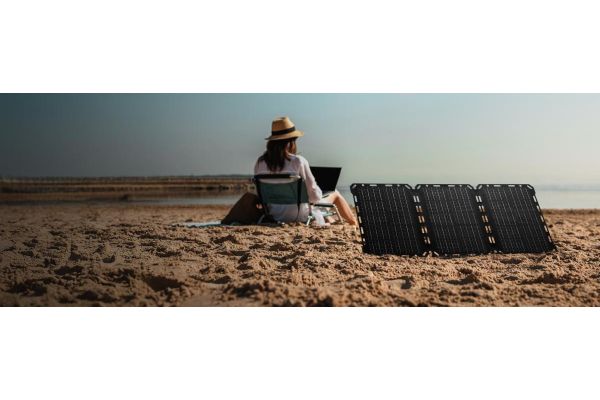Sound suppressors, or “silencers” in regulatory speak, are excellent tools for helping to preserve hearing while simultaneously limiting area noise when using firearms. Throughout the past 15 years, suppressors have become such popular accessories that they often figure into our suppressor-ready firearm tests. However, not everyone is pleased with the scope of that coverage.
Periodically, we receive complaints about the absence of sound-pressure level (SPL) ratings in our reviews. While we understand the desire for that information, there’s a reason why we shy away from publishing suppressor manufacturers’ SPL data: Outside of the full context of how those numbers were obtained, they raise more questions than they answer.
The chief problem is that not all equipment types and techniques used for testing firearm sounds are suitable for the task. If inaccurate, the resulting numbers can be worse than no data at all. Unlike muzzle- velocity (MV) measurements, where a difference of 15 to 20 fps is not very impactful, minor sound-pressure changes have exponential effects on what we hear. For example, a 10 decibel (dB) increase will result in sound that seems twice as loud to our ears, but which has a tenfold increase in intensity. Don’t ask me to explain that—logarithms make my head hurt.
I view manufacturer-published SPL measurements through the same skeptical lens as MV measurements printed on ammunition boxes. In the latter case, we can at least do our own velocity testing via chronograph or long-range drop-truing. Accurately determining peak firearm-sound levels is an entirely different story. Expensive, precision equipment is needed, test conditions must be tightly controlled and strict methodologies adhered to.
Back when I developed and tested weapon systems for Uncle Sam, sound suppressors were finally starting to transition away from clunky designs that didn’t seem far removed from Hiram Maxim’s 1909 “Silent Firearm” patent. Competition to make more efficient suppressors with better attachment systems was stiff, but companies tested their products differently. As a result, in-house SPL ratings were only useful when compared against other products from the same company.
We knew of just two sound meters that were suitable for testing small arms’ sound levels. Neither was in production, and extant, functional models were difficult to find. Altogether, these challenges steered us toward independent labs for unbiased help. That was almost two decades ago and as near as I can tell, things haven’t changed much.
I recently checked in with Bobby Reed of CMR Consulting to see what the suppressor-testing landscape looks like today. He and his son/company owner, Chris, have established CMR as a well-regarded, independent test facility for firearms, ammunition and ancillary equipment. Reed started the business 23 years ago, after retiring from a successful career as an Army SOF Operator and weapon-systems developer. He confirmed that finding adequate sound meters is still a challenge.
CMR Consulting is fortunate to have one of the older models that has the required impulse sound range and a fast enough rise time to keep up with firearm noise. Reed told me that most sound meters cannot do that and as a result, published suppressor SPL data often fails to capture true peak levels. That’s important because the assumption is that, by default, provided figures refer to peak SPL.
Reed pointed to two sound meters that are advertised as suitable for testing small-arms noise levels. Unfortunately, the first one, Bruel and Kjaer’s Model 2209, is out of production. Used models occasionally come up for sale, but he’s found that they consistently fail calibration. The other is Larson Davis’ Model 821IH-QPR, which is fairly new and has specifications that indicate it’s up to the task. If there are other options, they’re neither conspicuous nor plentiful at the moment.
Having the correct equipment is only half the battle. How sound-level testing is conducted is just as important. Microphone orientation and placement, ground-surface type, calibration processes, weighting-scale selection, atmospheric conditions, nearby obstacles, ammunition consistency and a bunch of other factors matter when accurate results are needed. In the U.S., two documents have traditionally been the main sources for guidance on this topic: MIL-STD 1474E and ANSI S1.4.
The military standard details noise limits and test methodologies for equipment and sound exposures that are common to military operations. It also provides guidance for hearing protection and cautions against unprotected exposure to steady sound levels at or above 85 dB and impulse noises at or above 140 dB. The ANSI document dives deeply into the specifications for sound-level meters that are used for different test scenarios. Versions of each document are available online, and if you can get through them both in one sitting—without your eyes rolling back in their sockets—the Editor-in-Chief would love to discuss them with you over a pitcher of iced chai.
A quick perusal of various manufacturers’ specifications will show that in the increasingly rare instances where numbers are provided, details on test methods, equipment used and whether testing was conducted in-house are left to speculation. But to be honest, most of us won’t notice much of a difference, if any, between two suppressors of like bore size and similar dimensions when used on the same rifle. Moreover, when considering a sound suppressor, design factors like attachment method, weight, length, caliber flexibility, modularity, ease of maintenance and cost are typically of greater concern than published SPLs of unknown origin.
Just as I was finishing this column, SAAMI published a new set of guidelines (Z299.6-2025) titled “Voluntary Industry Performance Standards Criteria for Firearm Sound Suppressors for the Use of Commercial Manufacturers.” Covered topics include standardized thread dimensions, test-cartridge specifications, barrel lengths used for sound testing and the integrity of suppressor designs. Other sections outline test procedures and equipment to help suppressor manufacturers adopt a uniform methodology. The verdict is out on whether or not this new reference will open the aperture to more sound-meter options, but we can hope.
It’s reasonable to expect that a modern sound suppressor, made by a competent manufacturer, will dampen a firearm’s report to a degree that helps preserve our hearing. At the same time, we must accept that suppressed rifles are still far from silent, especially when supersonic ammunition is used. While a difference of a couple decibels is significant in a laboratory setting, it isn’t a key driver in suppressor choice outside of professions where the penalty for firing a noisy rifle is to be on the receiving end of other noisy rifles.
Read the full article here




